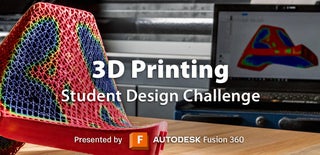Introduction: How to Make a Four Prop 3D Printed Spinner for Your RC Plane With Fusion 360
Introducing My 3D Printed Four Prop Spinner for the P51 Mustang: A Project Rooted in Passion and STEM Exploration
As an avid aviation enthusiast and passionate STEM learner, I am thrilled to present my latest creation: the 3D Printed Four Prop Spinner designed specifically for the legendary P51 Mustang. This project embodies my unwavering dedication to both aviation and the pursuit of knowledge in science, technology, engineering, and mathematics.
The inspiration behind this spinner stems from my deep admiration for the P51 Mustang and my desire to enhance its performance and visual appeal. I believe that the combination of classic design with modern advancements can create something truly remarkable. By designing and 3D printing this spinner, I aimed to not only improve the functionality of the aircraft but also contribute to the broader community of aviation enthusiasts who share my passion.
Furthermore, this project aligns perfectly with my dedication to STEM education. Assembling the 3D Printed Four Prop Spinner offers a hands-on opportunity for learners of all ages to engage with principles of aerodynamics, mechanical engineering, and design thinking. By actively participating in this project, individuals can develop critical thinking skills, problem-solving abilities, and a genuine appreciation for the complexities of aviation.
My Background -
Having recently completed my high school education this June, I am now preparing to apply for colleges for the upcoming fall intake.
Supplies
What you need -
- Fusion 360
- 3D printer
Step 1: Creating a New Design File & Sketching the Base Shape
- Start by opening Fusion 360 and creating a new design file.
- In the toolbar, select the "Create" button and choose "Sketch." Then, select the plane or surface where you want to create the sketch.
- Use the sketch tools, such as lines, circles, and arcs, to draw the base shape of the spinner. You can refer to reference images or design specifications to ensure accuracy.
- Once you have completed the base shape, exit the sketch and extrude the sketch to give it depth. Select the base shape, click on the "Create" button, and choose "Extrude." Set the desired extrusion depth and confirm.
Step 2: Extruding the Base Shape & Sketching the Propeller Blades
- Next, create a new sketch on the surface of the extrusion. Use the sketch tools to draw the shapes of the four propeller blades. Ensure that the blades are evenly spaced around the center of the spinner.
- Exit the sketch and extrude each blade shape individually to give them thickness. Select each blade shape, click on "Create," choose "Extrude," and set the desired thickness for each blade.
Step 3: Creating the Central Hub & Creating the Mounting Holes
- To create the central hub where the blades connect, create another sketch on the top surface of the spinner. Use sketch tools to draw a circle at the center. This circle will serve as the hub's base.
- Extrude the circle to create the central hub. Select the circle, click on "Create," choose "Extrude," and set the desired height for the hub.
- To add the mounting holes for the spinner, create a new sketch on the side of the hub. Use the sketch tools to draw circles representing the holes' positions and sizes.
- Exit the sketch and use the "Create" and "Hole" commands to create the mounting holes. Select each circle representing a hole, choose the "Hole" command, and set the appropriate hole specifications, such as diameter and depth.
Step 4: Rendering the Design
- Use the rendering tools in Fusion 360 to create a realistic representation of the spinner, adjusting lighting, materials, and other visual settings.
- Once you're satisfied with your design review the dimensions accordingly and we're good to go for printing.
Step 5: Reviewing and Refining the Design
- Once you have completed the design, review and modify it as needed. You can use additional features, such as fillets or chamfers, to refine the spinner's edges and improve its aesthetics.
- When you are satisfied with the design, save the file and export it in the desired file format for 3D printing, such as STL or OBJ.

Participated in the
3D Printing Student Design Challenge














